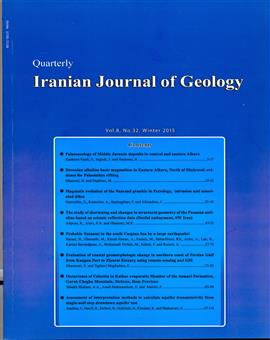Magmatic evolution of the Nasrand granitic in Petrology, intrusion and associated dikes
Subject Areas :زهرا Hamzehie 1 , فاطمه Sarjoughian 2 , جمشید Ahmadian 3 , علی کنعانیان 4
1 -
2 -
3 -
4 - Tehran University
Keywords: Granite Magma mixing Crystal size distribution Fractional crystallization.,
Abstract :
The Nasrand granitoid intrusion, which is located at southeast of Ardestan, consists of granite and granodiorite that intruded Eocene volcanic rocks and cut by NW-trending doleritic dikes. The granitic rocks display granular, pertitic, granophyric and poikilitic textures. Plagioclase crystals in these rocks composed of two distinct generation (large phenocrysts along with inclusions of lath-shaped crystals) and often exhibit zoning patterns and sieve textures. The conspicuous disequilibrium textures in the granitoid rocks may suggest that magma mixing beside fractional crystallization play a significant role in the formation of the plutonic rocks. In confirmation of petrographic data, crystal size distribution (CSD) technique was also used to determine crystallization conditions and magmatic processes that lead to the formation of the rocks. Increasing of feldspar crystal size in a semi-logarithmic plot of population density versus size represents fractional crystallization, whereas disruption and curvature of cumulative density of plagioclase and orthoclase on the semi-logarithmic diagram, indicating the arrival of new magma into the magma reservoir and confirm the importance of magma mixing. Additional chemical features such as variation trends of Rb versus Rb/Sr and Nb versus Nb/Y in the samples can be regarded as an indicator of magma mixing processes.


